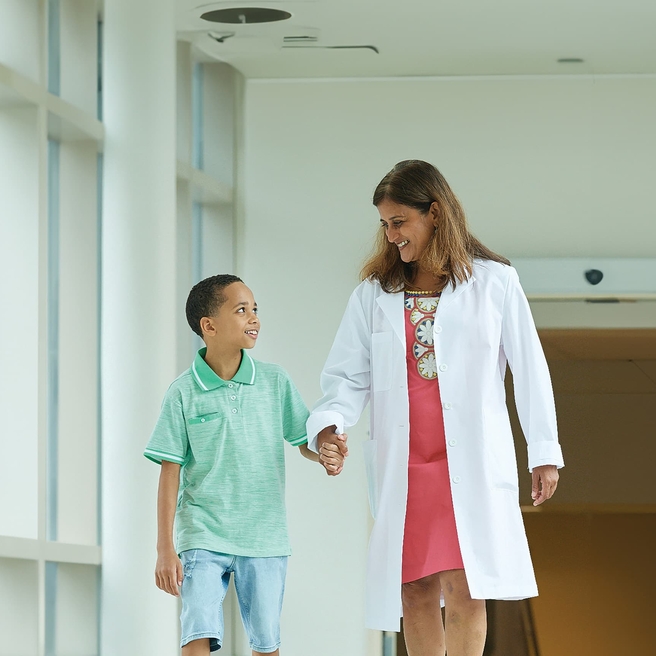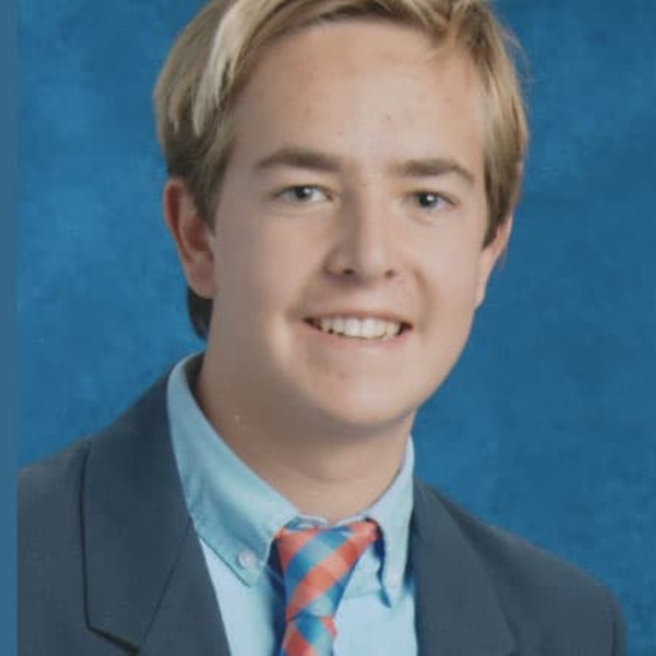What is heterotaxy syndrome (isomerism)?
Heterotaxy syndrome is a rare birth defect that involves the heart and other organs. The beginning of the word (hetero-) means “different” and the end (–taxy) means “arrangement.”
There are different forms of heterotaxy syndrome. All usually involve heart defects of varying types and severity. In addition, organs such as the stomach, intestines, liver and lungs may be in abnormal places in the chest and abdomen.
- The intestines may have malrotation, which is when the loops of bowel are lined up incorrectly. With this problem the bowel can twist on itself (volvulus). Many children with malrotation need abdominal surgery to correct it.
- Some children with heterotaxy syndrome can have a very serious condition of the liver called biliary atresia. This also may require surgical intervention.
- There may also be irregularities with the skeleton, central nervous system and urinary tract.
- In some cases of heterotaxy syndrome, the spleen may not work correctly or may be missing entirely. This can cause many problems, because the spleen helps the body fight infections. When the spleen is missing or doesn’t work correctly, patients have a more difficult time recovering from surgeries or infections (patients with heterotaxy may require multiple surgeries). In some cases, there may be a functioning spleen, but it may be divided into several smaller spleens (polysplenia). Most individuals will need to take antibiotics every day because the spleen is either missing or doesn’t work properly.
- Sometimes children with heterotaxy syndrome have dextrocardia syndrome. This means the heart is in the right chest instead of the left chest.
Here are general descriptions of two types of heterotaxy syndrome. The morphology (structure) of the heart varies from child to child. The Cardiac Center team will explain your child’s heart structure to you in detail. Types of heterotaxy syndrome include:
- Right isomerism (also called asplenia syndrome): Children with this condition have multiple heart defects. They may have septal defects (holes between the tissue dividing the two sides of the heart) and problems with heart valves, particularly the pulmonary valve which may be narrowed or sealed off. They often have only one pumping chamber (the right ventricle) with a single valve connecting the upper and lower chambers (atrioventricular canal). They may also have abnormalities of the blood returning from the lungs to the heart (anomalous pulmonary venous connection) and abnormalities of the blood returning from the veins in the body to the heart. The spleen may be absent (asplenia), and the liver and other organs may be on the wrong side of the body.
- Left isomerism (also called polysplenia syndrome): Children with this condition may have septal defects (holes between the tissue dividing the two sides of the heart) as well as problems with heart valves and the heart’s electrical system. The heart problems can be similar to those with right isomerism. They often have abnormalities of the blood returning from the veins in the body to the heart. Some children with this problem have complete heart block, which is when the upper-chamber electrical system does not communicate with the lower-chamber electrical system. Most children require pacemakers for this problem. The spleen may be absent, or there may be several small spleens (polysplenia), instead of one spleen.
Signs and symptoms of heterotaxy syndrome
Symptoms of heterotaxy syndrome vary widely and depend on the organs affected.
In nearly all cases of right isomerism and some cases of left isomerism, symptoms will appear at birth or a few days after because the heart defects are severe. In these cases, symptoms include:
- Blue or purple tint to lips, skin and nails (cyanosis)
- Difficulty breathing
- Difficulty feeding
- Lethargy: baby is abnormally sleepy or unresponsive
Sometimes patients with left isomerism don’t have any symptoms and the condition isn’t diagnosed until the child is older or an adult.
Testing and diagnosis of isomerism
In many cases, heterotaxy syndrome is diagnosed before birth. The Fetal Heart Program at The Children’s Hospital of Philadelphia can monitor baby and mother throughout pregnancy and create a plan for labor and care after birth.
CHOP has its own delivery unit in close proximity to the cardiac operating rooms and cardiac patient care units. Newborns can be in the care of pediatric cardiologists and specially trained cardiac nurses immediately after birth. The Fetal Heart Program team will discuss delivery in the Garbose Family Special Delivery Unit with mother and family.
After the child is born, diagnosis of heterotaxy syndrome may require some or all of these tests:
- Electrocardiogram (EKG or ECG): a record of the electrical activity of the heart
- Echocardiogram (also called “echo” or ultrasound): sound waves create an image of the heart
- Chest x-ray
- Cardiac MRI or CT scan: a three-dimensional image shows the heart's structures in detail
Sometimes, cardiac catheterization will be required. In cardiac catheterization, a thin tube is inserted into the heart through a vein and/or artery in the leg which makes measurements throughout the heart.
Other diagnostic tests on other areas of the body will also be required, including renal ultrasound and abdominal ultrasound. Throughout diagnosis and treatment, your Cardiac Center team will work with specialists, such as urologists, gastroenterologists and others, to provide the best care for this complex condition.
Treatment for heterotaxy syndrome
Treatment for heterotaxy syndrome varies depending on the severity of the heart defects and other organ abnormalities.
Most patients with left isomerism will require surgical procedures or catheterization to repair holes in the heart or other problems. Some patients will require implantable pacemakers or defibrillators to control an abnormal heart rhythm. In rare cases, patients with left isomerism won’t require any treatment, though they will need to visit a pediatric cardiologist regularly for checkups.
Nearly all patients with right isomerism, and some patients with left isomerism, will require a series of major heart surgeries. Surgeons will reconfigure the heart and circulatory system so that the heart functions with one ventricle (pumping chamber), instead of two. This is called Fontan circulation and requires three open heart surgeries, called staged reconstruction. The procedures include a first procedure that depends on the anatomy of the heart, Glenn operation, and the Fontan procedure.
Follow-up care
Between the first procedure and Glenn operations
Though early outcomes for patients with single ventricle heart defects after staged reconstruction have improved dramatically, the period between the first procedure and the Glenn operation remains a very vulnerable time for infants. CHOP created the Infant Single Ventricle Monitoring Program to focus on the care and monitoring of infants with single ventricle heart defects between the first and second reconstructive surgeries.
Through age 18
Patients with Fontan circulation are referred to as single ventricle patients. As these patients get older, doctors are recognizing that, while some do fine, many experience complications, including lung, liver and gastrointestinal diseases. CHOP created the Single Ventricle Survivorship Clinic, part of the Fontan Rehabilitation, Wellness, Activity and Resilience Development (FORWARD) Program, that specializes in the care of these patients and is researching improved treatments for them.
In addition, as a group, children with complex congenital heart defects who have had open heart surgery as infants are at a higher risk for neurodevelopmental issues when compared to children without congenital heart defects. The Cardiac Center at CHOP created the Cardiac Kids Developmental Follow-up Program to provide evaluation, screening and clinical care for children with complex congenital heart disease who are at risk for neurodevelopmental problems.
All children with heterotaxy syndrome will require lifelong care by a cardiologist. In many cases, children with this condition will have many needs and will require care from different teams at CHOP for many years.
The family is very important in the child’s care. For instance, in patients who do not have a spleen, an infection can quickly become life-threatening. If the child develops a fever (one sign of infection), the family must take the child to a hospital quickly, as IV antibiotics may be required. Your team at the Cardiac Center will make sure you understand the steps you need to take to help keep your child safe.
Into adulthood
We will help older patients with heterotaxy syndrome transition to an adult cardiologist. The Philadelphia Adult Congenital Heart Center, a joint program of Children's Hospital of Philadelphia and Penn Medicine, meets the unique needs of adults who were born with heart defects.

Why Choose Us
Our specialists are leading the way in the diagnosis, treatment and research of congenital and acquired heart conditions.
Resources to help
Cardiac Center Resources
We know that caring for a child with a heart condition can be stressful. To help you find answers to your questions – either before or after visiting the Cardiac Center – we’ve created this list of educational health resources.
Reviewed by Meryl S. Cohen, MD, MSEd
Reviewed on 08/05/2024

